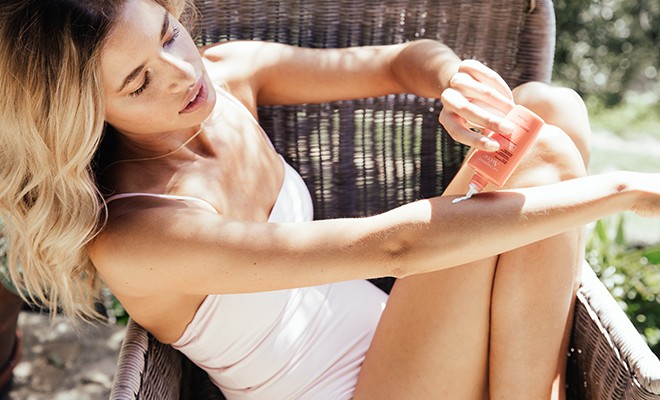
We know you’ve heard it time and time again, and we’re going to say it again…SPF is a must, rain or shine.
That’s why we included Eau Thermale Avène Ultra-Light Hydrating Sunscreen Lotion in the box. It’s a broad spectrum SPF 50+ that’s hypoallergenic, fragrance-free, and oil-free. But there’s much more to SPF than just slathering it on right before you hit the pool. We chatted with dermatologist Haleh Bakshandeh M.D. about all things skin care, from how often you should apply SPF to the common signs of skin cancer. So read up, because your health is everything!
What are some easy things people can do in the summer to avoid sun damage?
Try and avoid the sun or at least seek shade during the peak hours of 10 a.m. to 2 p.m. Use a broad-spectrum (UVA and UVB) sunscreen of 15 or higher for everyday use and SPF 30 for extended outdoor activity. Apply 1 ounce (2 tablespoons) of sunscreen to your body a half an hour before exposure and every 2 hours thereafter. Don’t forget to reapply right after swimming and excessive sweating.
What’s one of the biggest myths about skin cancer?
Perhaps one of the biggest myths about skin cancer is that it won’t kill you. In fact, about 12,000 people die from skin cancer every year, most of those are from melanoma. One person dies from melanoma every hour! Those statistics are pretty scary, but the good news is that skin cancer is a very preventable disease. By practicing good sun protection and skin exams, you minimize your risk of becoming a statistic.
Another important myth to dispel is that more often than not, skin cancer does not hurt, or itch, or cause any discomfort, so don’t rely on those signals.
What are some common myths about SPF? What are some key things you think should be in every SPF product?
A common myth about SPF is that high numbers directly correlate to higher protection. In reality, an SPF of 15 filters out approximately 93 percent of UVB rays, SPF 30 about 97 percent, and SPF 50 about 98 percent of UV rays. Once you are in the 15 to 30 SPF range, the quantity (1 ounce) and frequency (every two hours) become more important factors in your level of protection.
Another myth about sunscreen is that you don’t need it if it’s cold or cloudy. This is not true. Forty percent of the sun’s ultraviolet rays reach the earth on a cloudy day. This common misconception can lead to serious sunburns because people spend all day outdoors without protection.
UVB is the chief culprit behind a sunburn, but UVA also contributes to skin cancer and photoaging so it’s important to look for a sunscreen that offers protection against both UVB and UVA radiation, or what is called a broad-spectrum sunscreen. The SPF or Sun Protection Factor is a measure of a sunscreen’s ability to prevent UVB damage only, so don’t stop there.
How often should you check your skin for suspicious moles and what’s the rule of thumb when looking for them?
The Skin Cancer Foundation recommends examining your skin from head to toe every month and getting a professional exam from your dermatologist at least every year. When you are looking for suspicious moles there are some characteristics that can be helpful to remember. They are often referred to as the ABCDE rules.
xx, The FabFitFun Team
P.S. Psst! Have you signed up for the #FabFitFun box yet? Don’t miss out on $200+ in amazing beauty, fitness, fashion, and lifestyle products every season. Join today!
To get the most out of your box products, make sure to check out the Insider page.





